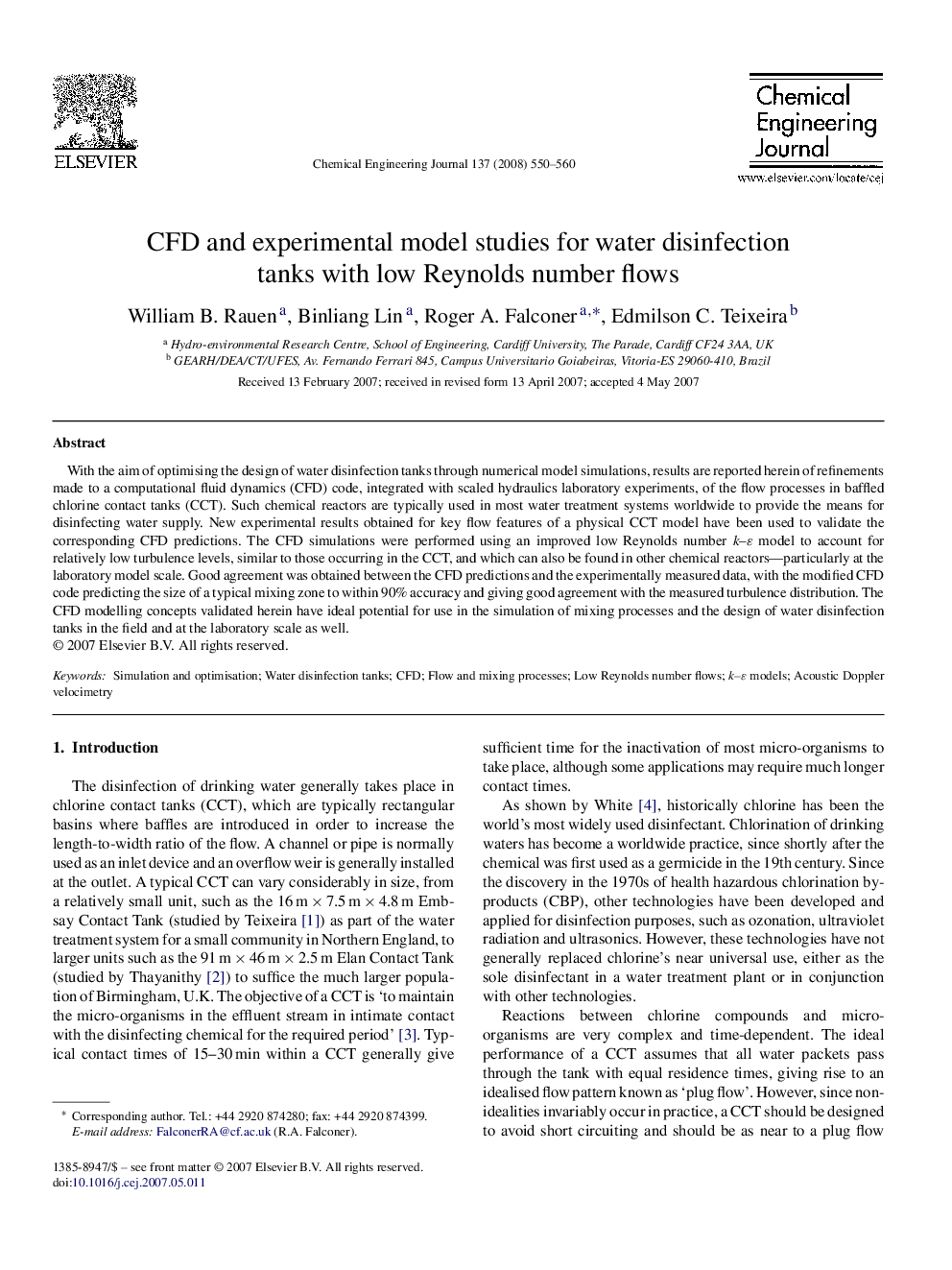| Article ID | Journal | Published Year | Pages | File Type |
|---|---|---|---|---|
| 153464 | Chemical Engineering Journal | 2008 | 11 Pages |
With the aim of optimising the design of water disinfection tanks through numerical model simulations, results are reported herein of refinements made to a computational fluid dynamics (CFD) code, integrated with scaled hydraulics laboratory experiments, of the flow processes in baffled chlorine contact tanks (CCT). Such chemical reactors are typically used in most water treatment systems worldwide to provide the means for disinfecting water supply. New experimental results obtained for key flow features of a physical CCT model have been used to validate the corresponding CFD predictions. The CFD simulations were performed using an improved low Reynolds number k–ɛ model to account for relatively low turbulence levels, similar to those occurring in the CCT, and which can also be found in other chemical reactors—particularly at the laboratory model scale. Good agreement was obtained between the CFD predictions and the experimentally measured data, with the modified CFD code predicting the size of a typical mixing zone to within 90% accuracy and giving good agreement with the measured turbulence distribution. The CFD modelling concepts validated herein have ideal potential for use in the simulation of mixing processes and the design of water disinfection tanks in the field and at the laboratory scale as well.
